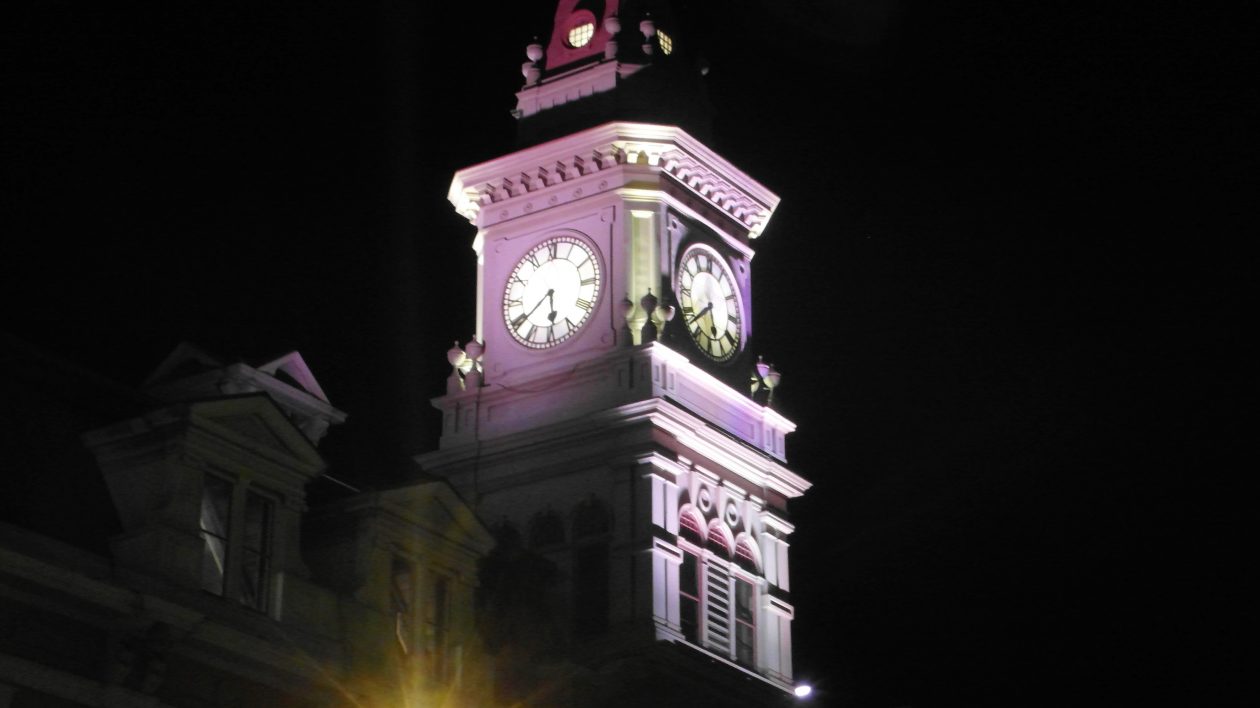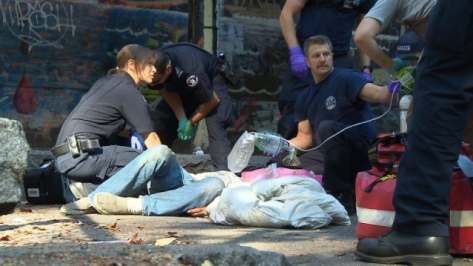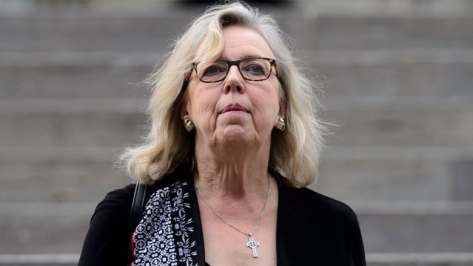Canadian Foreign Minister Chrystia Freeland has become a bit of a living parody of everything wrong with the detached technocratic neo-liberal order which has driven the world through 50 years of post-industrial decay. Now, two years into the Trump presidency, and five years into the growth of a new system shaped by the Russia-China alliance, the world has become a very different place from the one which Freeland and her controllers wish it to be.

Chrystia Freeland
Having been set up as a counterpart to the steely Hillary Clinton who was supposed to win the 2016 election, Freeland and her ilk have demonstrated their outdated thinking in everything they have set out to achieve since the 2014 coup in Ukraine. Certainly before that, everything seemed to be going smoothly enough for End of History disciples promoting a script that was supposed to culminate in a long-sought for “New World Order”.
The Script up until Now
Things were going especially well since the collapse of the Soviet system in the early 1990s. The collapse ushered in a unipolar world order with the European Union and NAFTA, followed soon thereafter by the World Trade Organization and the 1999 destruction of Glass-Steagall. The trans-Atlantic at last was converted into a cage of “post-sovereign nations” that no longer had actual control of their own powers of credit generation. Under NATO, even national militaries were subject to technocratic control. This cage was perfect for the governing elite “scientifically managing” from above while the little people bickered over their diminishing employment and standards of living from below.
Even though the former Soviet bloc nations were in tatters by 1992, their sovereign powers could only be undone by applying the liberalization process which took 30 years in the west in a short space of only a decade. This was done under the direction of such monetarist “reformers” such as Anatoly Chubais and Yegor Gaidar under Yeltsin. Similar privatization and liberalization reforms were applied viciously to Ukraine and other Warsaw pact countries during the same period. Those pirates that became the “nouveau riche” of the west were joined by such contemporary modern oligarchs such as Oleg Deripaska, Boris Berezovksy, Mikhail Fridman, Roman Abramovich in Russia, alongside Petro Poroshenko, Rinat Akhmetov, Mikhail Khodorkovsky and Viktor Pinchuk of Ukraine (to name a few). Not to forget their spiritual roots, many of these oligarchs soon purchased houses in the swank upmarket sections of London which has come to be known as “Moscow on Thames.”
By the end of the 1990s a new phase of this de-nationalization was unleashed with the unveiling of the Blair doctrine explicitly calling for a “post-Westphalia” world order which unleashed a wave of hellish regime change wars in the Arab World beginning with 9-11, and with a long term intention to target Libya, Syria, Iran, and Lebanon while expanding NATO’s hegemony against the potential re-emergence of Russia and China.
The Economic Meltdown Was Always the Intention
Let’s be clear: the whole point of the post-1971 world was directed with the intention of destroying the moral-political and economic foundations for western society. The belief in scientific progress and industrial growth was the cause of all true progress from the 15th century Golden Renaissance to the assassinations of the 1960s. The intended consequences of this post-1971 (zero growth) policy were:
1) The destruction of the productive forces of labor vis a vis outsourcing to “cheap labour markets” driven by shareholder profit.
2) The consolidation of wealth into an ever smaller array of private multi-billionaire owners under a logic of Darwinian survival of the fittest.
3) The creation of a vast speculative bubble supported by ever greater rates of unpayable debt and totally detached from the physically productive forces of reality.
Just like 1929, after years of speculation known as the roaring twenties, the “plug could be pulled” on the bubble in order to impose a bit of shock therapy onto a sleeping population who would beg for fascism as a solution if only it would put bread on their tables. Though this plan failed 80 years ago due to the American rejection of fascism under President Roosevelt, the belief that the formula could succeed in the 21st century was adhered to most closely as long as America was brought firmly under control of the City of London and their Wall Street lackies.
Although the fascist “solution” to their manufactured crisis was put down during WWII, this new attempt was premised upon the policy that a new system of Global Government managed by draconian regulation would be imposed under a “Green New Deal” framework whereby the instruments of banking regulation, state directed capital and centralized government (not evils unto themselves), would be directed only to green, low energy flux density forms of energy which inherently lower the population of the earth. This is very different from the protectionism, bank regulation, state credit and central authority exerted by America during the 1930s New Deal (or Eurasian New Silk Road policy today). The difference is that one system empowers sovereign nations, and increases the productive powers of labor and energy flux density of humanity while increasing quality of life, the other “Green” agenda has the opposite effect whereby monetary incentives are tied to decreasing the “carbon footprint” of the earth. The image of a drug addict getting paid heroine as an incentive to bleed himself to death is useful here.
With the slow collapse of first world economies after the assassination of nationalist leaders in the 1960s, the plan for depopulation and global government seemed to be unfolding without serious opposition.
The Role of Chrystia Freeland
Freeland’s bizarre role in this whole affair was to do what every good Rhodes Scholar is conditioned to do upon their completion of their indoctrination at Oxford: facilitate the tough transition of the “pre-collapse” world economy into a new operating system that was meant to be the “green post-collapse” world economy. It wasn’t going to be easy to tell a new “pirate class” of billionaires that they would have to accept losing much of their wealth (less population equals less money), and operate under a strict new global operating system of regulation necessary to contract the society. The Rhodes Scholarship program begun in 1902 to advance a re-organized British Empire and had worked alongside the Fabian Society for over a century producing more than 7000 scholars who have permeated across all fields of society (media, education, government, military and corporate).
In his 1877 will, Cecil Rhodes said this group should be “a society which should have its members in every part of the British Empire working with one object and one idea we should have its members placed at our universities and our schools and should watch the English youth passing through their hands just one perhaps in every thousand would have the mind and feelings for such an object, he should be tried in every way, he should be tested whether he is endurant, possessed of eloquence, disregardful of the petty details of life, and if found to be such, then elected and bound by oath to serve for the rest of his life in his Country. He should then be supported if without means by the Society and sent to that part of the Empire where it was felt he was needed.”
After leaving Oxford in 1993, Chrystia Freeland learned the ropes of “perception management” by working for the London Economist, Washington Post, Financial times and Globe and Mail and Reuters. After serving a stint as editor-at-large of Reuters, the time had come for her to play the role of Valery Jarrett to the “Barack Obama” of Canada then being prepped for Prime Ministership of Justin Trudeau.
She was perfect.
As an asset of the global propaganda system, Freeland had made high level contacts with those Ukrainian, Russian, and Western oligarchs mentioned above including Viktor Pinchuk and Mikhail Khodorkovsky. Larry Summers, George Soros and Al Gore, were just a few players in the west whom she considered her “close friends” and whom she was happy to bring into Canada during the period of re-organization of the Liberal Party (2011-2014) as it prepared to take power under the banner of the Canada 2020 think tank. What made Freeland even more special was that she was bred from a zealous family of Ukrainian nationalists under the patriarchy of her Nazi grandfather Michael Chomiak. This network was brought to Canada after WWII by Anglo-American intelligence and cultivated as a force with ties to pro-Nazi Ukrainian counterparts ever since.
Freeland’s admission into politics was managed by another Rhodes Scholar named Bob Rae who served as interim controller of the Liberal Party during several of the Harper years and was a major player in Canada 2020. Rae, who had been the NDP Premier of Ontario from 1990-1995 was happy to abdicate his seat to Freeland ensuring her entry into Trudeau’s inner circle and thus becoming his official handler.
Freeland Promotes the New Global Elite
Freeland has made it clear that she understands well that there is a fundamental difference in cultural identities of the “new rich” relative to the older oligarchic families which she serves. In the 2011 Rise of the New Global Elite, she describes it as follows:
“To grasp the difference between today’s plutocrats and the hereditary elite, who “grow rich in their sleep” one need merely glance at the events that now fill high-end social calendars.”
Freeland then breaks down the categories of “new plutocrats” into two subcategories: the good, technocratic friendly plutocrats who are ideologically compatible with the New World Order of depopulation, such as Bill Gates, Warren Buffet, George Soros, et al and the “bad” plutocrats who tend not to conform to the British Empire’s program of global governance and depopulation under the green agenda. In Freeland’s world “good oligarchs” are those who adhere to this agenda, while “bad oligarchs” are those who do not. Trump is a terrible Plutocrat, and – Viktor Yanukovych was a good plutocrat until he decided to not sacrifice Ukraine on the altar of the collapsing European Union and chose to throw Ukraine’s destiny into the Eurasian Economic Union in October 2013.
In the same paper, Freeland wrote:
“if the plutocrats’ opposition to increases in their taxes and tighter regulation of their economic activities is understandable, it is also a mistake. The real threat facing the super-elite, at home and abroad, isn’t modestly higher taxes, but rather the possibility that inchoate public rage could cohere into a more concrete populist agenda– that, for instance, middle-class Americans could conclude that the world economy isn’t working for them and decide that protectionism… is preferable to incremental measures.” Quoting billionaire Mohamed El-Erian, the CEO of Pimco she wrote: “one of the big surprises of 2010 is that the protectionist dog didn’t bark.”
Freeland ended her article with this message:
“The lesson of history is that, in the long run, super-elites have two ways to survive: by suppressing dissent or by sharing their wealth… Let us hope the plutocrats aren’t already too isolated to recognize this”.
But what does Freeland really think of the technocratic management under a plutocratic governance of society? In Plutocrats vs. Populists (Nov. 2013), Freeland lets her pro-plutocratic worldview out of the bag when she gushes:
“At its best, this form of plutocratic political power offers the tantalizing possibility of policy practiced at the highest professional level with none of the messiness and deal making and venality of traditional politics… a technocratic, data-based, objective search for solutions to our problems”
Since a technocratic managerial class committed to a common ideology must be solidified for this system to work, Freeland goes on to make the case to recruit young people to the imperial civil service:
“Smart, publicly minded technocrats go to work for plutocrats whose values they share. The technocrats get to focus full time on the policy issues they love, without the tedium of building, rallying– and serving– a permanent mass membership. They can be pretty well paid to boot.”
The End of a Delusion?
Now that Russia and China’s new operating system shaped by the Belt and Road Initiative has created a force of opposition to this British-run Deep State design, nothing which those would-be gods of Olympus have attempted to achieve has succeeded. Syria stands strong and the Arab nations are increasingly joining China’s Belt and Road Initiative. Venezuela has failed to fall the way so many regimes have done before 2014 and NAFTA has been seriously challenged by a nationalistic president in the USA who has also totally rejected the Malthusian agenda with the killing of COP21 and the Green New Deal. Trudeau’s usefulness has withered away quicker than you can say “SNC Lavalin” and now the decision appears to be seriously humored whether Freeland will take the reins of Canada after Trudeau is eliminated in order to “preserve the dying British Empire” and the dream of Cecil Rhodes. While the universe may be organized by a principle of reason, no one can say the same applies to the mind of an oligarchic.

 Mia Lauzon (left) and Barrett R. Blackwood are running a free community hub in downtown Victoria (Nicole Crescenzi/News Staff)
Mia Lauzon (left) and Barrett R. Blackwood are running a free community hub in downtown Victoria (Nicole Crescenzi/News Staff)




